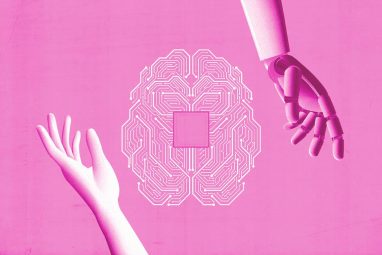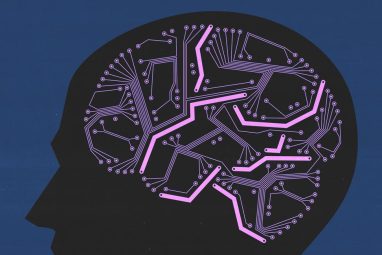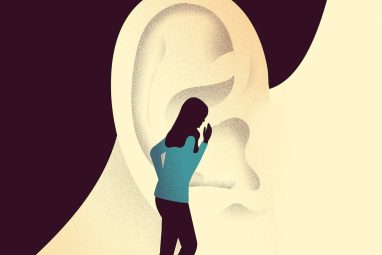The Future of Personal AI Blurs the Line Between Agent and Companion
Meta, Google, IBM, and Microsoft are building AI tools that don’t just work for you but are also learning to relate to you.
News
- California’s Genspark Enters AI Unicorn Club with $200 Million Round
- OpenAI Taps Intel’s Sachin Katti to Build Compute Backbone for AGI
- Flipkart Brings Voice-Led Wholesale Ordering to WhatsApp with Sarvam AI
- Varun Berry Steps Down at Britannia, Rakshit Hargave to Take Over
- OpenAI Issues Warning on AI’s Acceleration From Inside the Fast Lane
- Intel Eyes Deeper India Play in Chips, AI

Lately, Big Tech has been in a race to redefine what “personal AI” means. Meta, Google, Microsoft, and IBM are busy rolling out assistants, agents, and digital companions, each claiming to transform not just how we work and communicate but how we experience the world itself.
Meta introduced its Meta AI app, powered by Llama 4, marking what it calls a first step toward “building a more personal AI.” Already embedded across WhatsApp, Instagram, Facebook, and Messenger, Meta AI now extends into a standalone app centered on voice-based conversations, hinting at the company’s ambition to make AI feel more human, not just functional.
Meanwhile, Google claims that “since 2016, Google Assistant has helped millions of people get more done.” However, users wanted something more natural, an assistant that doesn’t just answer questions but talks, reasons, and personalizes responses.
Enter Gemini, Google’s AI assistant built from the ground up with advanced reasoning and conversational capabilities. “We’ve reimagined what an assistant can be,” the company noted, emphasizing Gemini’s ability to grasp nuance and context far beyond simple commands.
Across the ecosystem, others are pushing boundaries too. Perplexity, known for its conversational search engine, launched an Email Assistant that turns inboxes into action hubs for subscribers of its premium Max tier.
Not far behind, Microsoft announced agent flows in Copilot Studio, empowering businesses to weave AI-driven automation into structured workflows. Moreover, IBM’s WatsonX Orchestrate now lets enterprises deploy AI agents to automate routine tasks without expanding teams, freeing humans to focus on creative or strategic work.
In parallel to AI companions designed for personal interaction, a new generation of AI agents is fast emerging in the enterprise world. Agents are built to execute, automate workflows, manage systems, and make operational decisions.
Atlassian’s Rovo Dev, for instance, is a context-aware AI agent that accelerates the software development lifecycle, handling planning, coding, reviews, and automating repetitive engineering work.
Pegasystems recently launched Pega Agent X, an “agentic AI” capability designed to tackle enterprise complexity through autonomous problem-solving. Both categories, companions and agents, are designed to help us “work better.”
But the question is: How should we really categorize these products — as companions, agents, or assistants? The lines are starting to blur.
Two Sides of the AI Coin
Experts say that the distinction lies less in technology and more in design philosophy. “AI agents and AI companions share the same technological foundation, large language models (LLMs) and generative AI, but they differ in purpose, design, and interaction style,” says Ganesh Gopalan, Co-founder & CEO of Gnani.ai.
“AI agents are built for productivity and task execution. They focus on automation, precision, and efficiency. AI companions, on the other hand, are built to understand and relate. They emphasize emotional intelligence and empathy,” he adds.
Gopalan believes both will ultimately converge: “As the technology matures, agents will become more empathetic, and companions more capable, blurring the line between efficiency and emotion.”
Madhav Krishna, Founder and CEO of Vahan.ai, shares a similar view. “They don’t just complete tasks but simulate intelligence in a way that allows us to talk to them, interact with them, and sometimes even feel like we’re being understood,” he says. “They give us the perception of empathy.”
Yet he cautions that the question of whether these systems can genuinely empathize is still more philosophical than technical. “Is empathy about saying the right things—or about feeling something real?” Krishna asks. “If LLMs can convincingly mirror empathy, does that make them empathetic?”
The Convergence of Logic and Emotion
At a structural level, AI agents have evolved from systems built to perform, optimize, and deliver. They thrive on logic and automation for complex decision-support functions. AI companions, conversely, stem from models that prioritize human resonance, trust, empathy, and emotional understanding.
“AI agents and companions represent two parallel yet convergent branches of intelligence, one built for action, the other for emotionally intuitive understanding,” says Vanya Mishra, Co-founder & CEO of AstroSure.ai. “As models advance, these identities blur. The productivity of an AI agent is enriched by emotional intelligence, while an AI companion becomes more powerful when it can act with autonomy.”
At AstroSure, Mishra says, they see this convergence daily. “Our systems must not only calculate planetary patterns with precision but also translate that data into compassionate, emotionally intuitive guidance. In fields like healthcare, wellness, and education, this duality isn’t optional; efficiency and empathy must coexist.”
Divye Agarwal, Co-founder of BingeLabs, echoes that sentiment.
“AI agents and companions are not two different technologies; they’re two evolutionary paths of the same intelligence architecture,” he explains. “Agents are built for task execution; companions for emotional resonance. The difference lies in interaction design, not capability.”
Agarwal believes that as these systems mature, their boundaries will become increasingly blurred. “The AI tools of the future will have a dual nature; they’ll be agents that can accomplish tasks and companions who understand the reasons behind those tasks.”
Design Defines the Difference
For Kiran Nambiar, Co-founder and CEO of MyFi, the divergence lies in purpose rather than power. “Fundamentally, it’s a singular technology, generative AI, that allows for both automation and conversation. AI agents enable back-office efficiencies, while AI companions act as customer-facing representatives. One cannot work without the other,” he says.
As India’s AI market matures, Nambiar sees growing opportunities for this dual design. “With rising financial maturity among both consumers and institutions, AI-powered solutions, both agents and companions, must work in tandem to deliver experiences that are personalized and relevant.”
What’s Next?
The adoption numbers paint a striking picture. Nearly 79% of organizations globally have already implemented AI agents, with two-thirds reporting measurable productivity gains. Meanwhile, the emotional-AI market, which powers companion-style experiences, is expected to grow from $2.6 billion in 2023 to $19.4 billion by 2032, expanding at a 25.4% annual rate.
But the success story is far from complete. Despite widespread use, only 46% of people globally trust AI systems, and a mere 14% completely trust AI-generated information.
Well, that’s the paradox of modern AI: powerful enough to transform how we live and work, yet still struggling to earn our trust. Experts say this is precisely where design and communication will determine the future of AI adoption. A chatbot that automates your schedule might save time, but one that understands tone, emotion, and context will earn trust.
“AI stops being just a tool when efficiency is paired with empathy,” Krishna says. “That’s when it becomes a trusted partner.”
The convergence of AI companions and agents signals a new phase in human-computer interaction. We may soon reach a point where the line between machine cognition and human-like empathy isn’t just blurred, it disappears.




